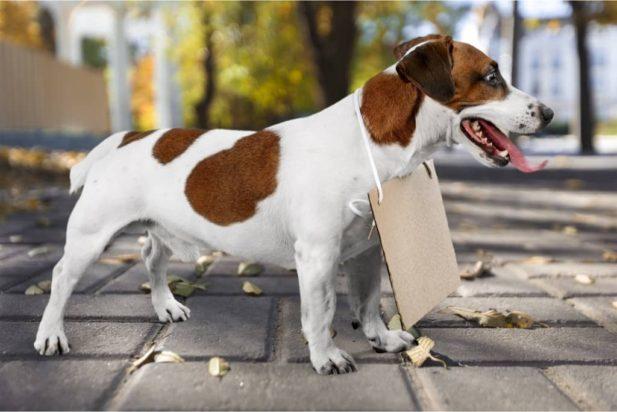You woke up this morning, and found your dog’s bed empty. You realized there is no need to walk today, or make food. The house felt empty and cold.
It’s been over 24 hours since your dog got lost, and he/she is still not back.
You have been searching in every place you could imagine, shouting her name over and over again. You broke your head trying to figure out where she could have gone.
You might be thinking that if you don’t find her soon, you never get to see her again.
I assure you, your chances are not as bad as you think, and we have some great ways to increase them even further.
In a hurry and just want to get professional help? Lost My Doggie is a premium dog finding service that can greatly increase the odds of finding your dog.
But first…
What Are The Chances of Finding a Lost Dog After 24 Hours?
According to the ASPCA, the odds of finding a stray dog are about 93% within the first 24 hours. These chances drops to about 60% after that. This is based on a nation-wide research including tens of thousands of lost dogs, over the course of multiple years.
These numbers might look alarming, especially if 24 hours have already passed. Luckily, you can greatly increase those odds if you take the right action.
How To Get Your Dog Back As Soon As Possible?
Summary
- Take a break from searching and get organized. —->
- Use flyers and ads as much as you can. —->
- Get on Social Media. –—>
- Contact local shelters. —->
- Contact local vets. —->
- Contact as many neighbors as possible. —->
- Issue a pet amber alert. —->
- Narrow down your search area. —->
- Vary your search times. —->
- Don’t chase your dog if you find it. —->
- Lure your dog in with food and familiar items. —->
This is the question that every loving dog owner would be asking.
That is why we have accumulated the best advice for finding lost dogs we could find. These tips are from vets, dog trainers, pet detectives, and family/friends. Thousands of people have used them with great effect
1) Stop Searching For a Moment

You need to divert some time to increasing your reach!
One person alone cannot cover much ground. You need more people on the lookout, and the following tips are going to do that.
But you can’t mobilize a search army while also running around in the woods or neighborhood.
So step back for a moment, take a deep breath, and read the following tips with as fresh a mind as you can.
2) Put Up Flyers And Ads
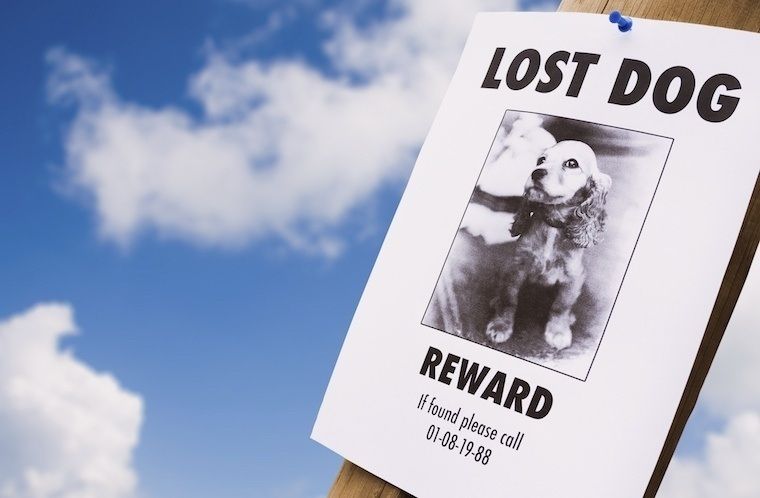
This might seem like a no-brainer but you want to make sure you have done it right. If you think that flyers are too old-fashioned to work, think again.
These work when you use them right.
You are after two things; to get your flyers seen by the right people, and for them to recognize your dog when they see it. Make sure to print a good amount of flyers, at least a 100, so that you don’t need to waste time reprinting.
Make your flyers stand out as much as possible. The best way I found is to use very large fonts, and bright colors.
Place your flyers at eye height, in well lit areas. You want to cover at least the areas where a lot of your neighbors go (shopping malls, parks, etc), and the place where your dog ran away. If your dog ran away before, you can also go for the area where he/she was found again.
3) Use Social Media

Social media are a powerful way to reach people. The key to success here is to get in front of the right audience and at the right time.
Post on your own profiles that you lost your dog, and add as much information as you can. Don’t forget to use the most recognizable pictures and hashtags like #lostdog #goldenretriever #pittsburgh #centralpark.
Ask your friends to share the post. Local groups can also be a good place to get the word out.
4) Contact the Local Shelters
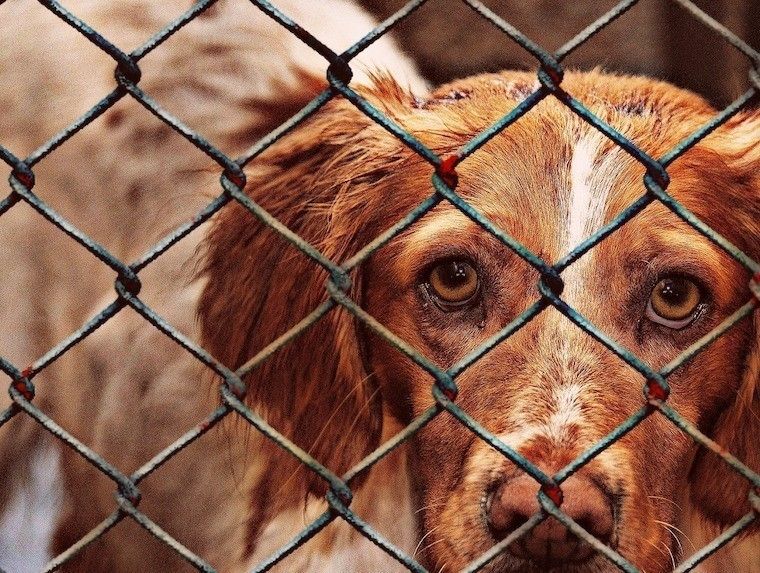
Contact every animal shelter and rescue in a 20 mile radius where you lost him/her. Ask them if they have found your dog. If they haven’t found it, ask them if you can place one of your flyers.
To find the shelters, you can use Google or see the website of the ASPCA.
5) Contact The Local Vets
This is very similar to point 5 except for vets. Some people might bring a lost dog to their local veterinarian or report it there. And a lot of dog owners will come here.
If you call every vet in the area you will at least know if they heard or saw anything. The best thing to do however is ask them if they will print a copy of your flyer and hang it in the waiting room. You might have to insist a bit here and really stress how much you want your dog back.
If you can get it, you have another great way to reach animal minded people.
6) Contact Your Neighbors

Most dogs get found in the area they were lost. So alerting people in that area will greatly increase your chances. And the most universal way to reach people is still by phone.
The first thing to do, is call everyone you have as a contact.
But you probably don’t have every neighbors as a contact. So reaching out further is a little harder.
One way is to use a reverse address lookup like Spokeo. This will let you find phone numbers of people living at certain addresses.
But you will have to pay to get the information. Spokeo charges $0.95 per number so this can get expensive fast.
7) Issue a Pet Amber Alert.

Have you ever heard of a pet alert?
It’s like an amber alert for dogs: A team of specialists will run an extensive awareness campaign for your dog. They create posters, use social media, call shelters and vets, and reach out to your neighbors.
The more people know about your dog being lost, the higher your chances of finding him/her.
You will save valuable hours, even days, and greatly increase your chances of finding your lost dog.
*All the while, you do what you do best: Searching for your dog, and connecting when you find it. *
We have researched the companies that provide this service and there is one that clearly stood out: lostmydoggie.com
- The are very experienced with 75,000 pets found since 2009 and only 5 star reviews
- They helped two of my friends get their dogs back.
- They offer different packages, starting for free. We would urge you to take the Bark package because it includes the amazing neighbor-calling service.
Click here to check the prices
8) Narrow Down Your Search Area
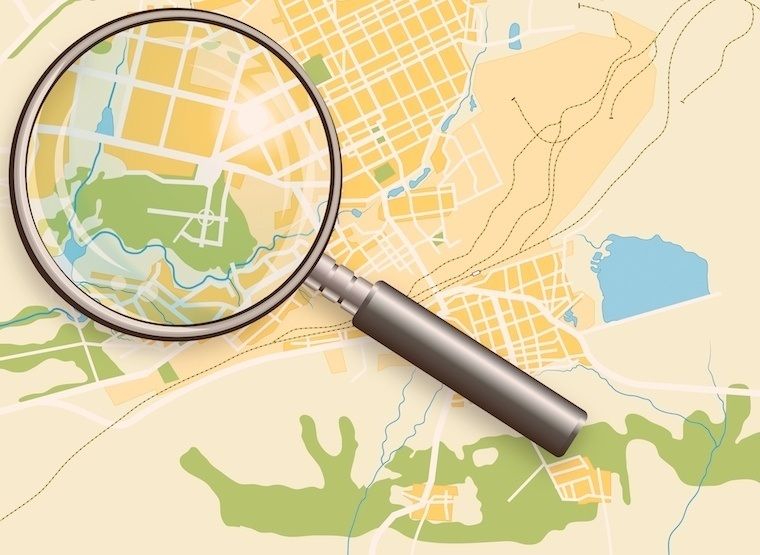
You probably have been searching for your dog already, and have noticed how much time it takes to cover any area. So it’s extremely effective to cross off areas.
Sit down with a pen and paper, and ask yourself; what do I know about my dog that might be relevant?
Some questions that you can ask are: was my dog lost before, and how did I find it again? What things is my dog attracted to? Are there any other dogs that he/she likes to spend time with?
Once you start writing some of these things down, you will get a better idea of where to look. It can be helpful to get a paper map and decide on areas that your dog will very likely avoid.
9) Search At The Right Times

When dogs are alone, their natural instincts will come back and cause them to be most active during dusk and dawn. Search in the most likely places during these times.Make sure to bring a powerful flashlight. With a good flashlight, you can illuminate a much larger area and spot a dog. It will also help you get around in outdoor areas and keep you save from tripping over things.
10) Don’t Chase Your Dog
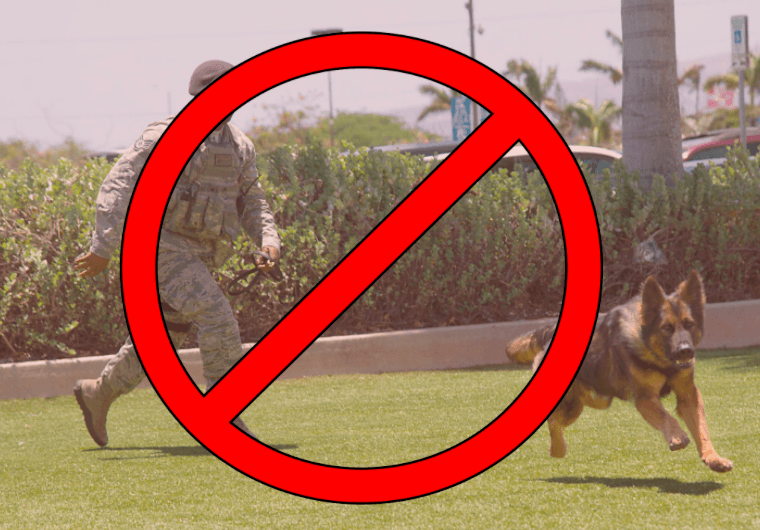
If you find your dog but he or she starts moving away, don’t run or walk in pursuit! This is very counter-intuitive but very important!
Chasing your dog can scare him/her off!
When a dog is lost and alone for 24 hours it can get stressed and anxious. The dog just wants to be safe and avoids anything remotely scary. It doesn’t mean that the dog hates you.
If you do go chasing the dog, you can easily scare it. Some dogs become so traumatized that they never want to return to people at all.
11) Place food and Familiar items in the area where he/she got lost.
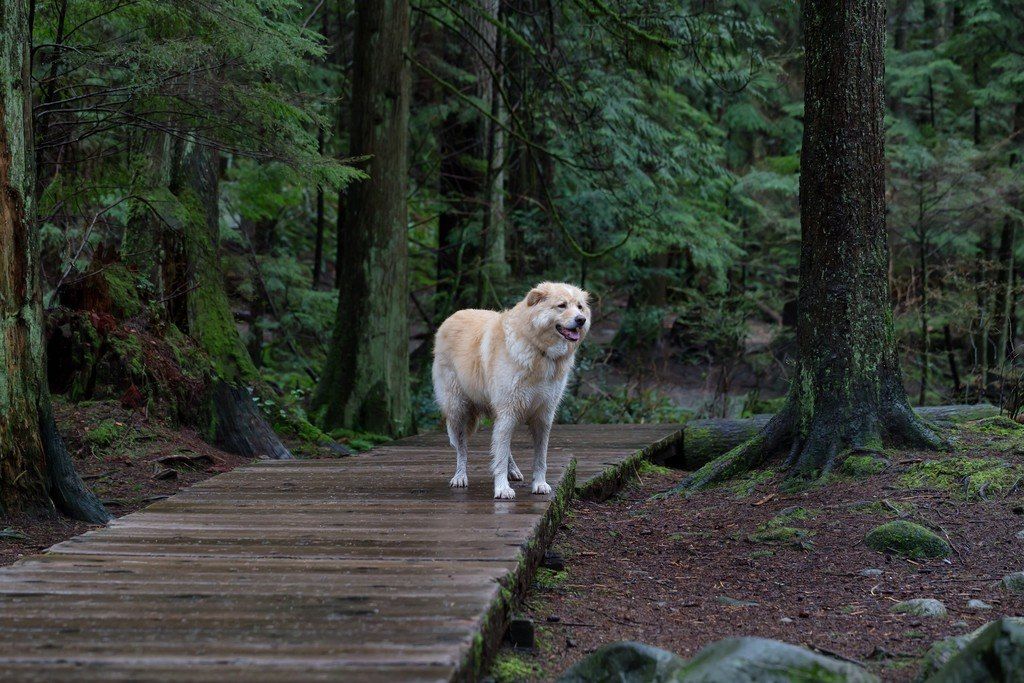
Dogs are naturally good at tracking. And when they find get lost, they fall back on this amazing skill to try to find their way back to you.
When they do, they can end up in the car park where you left. If your dog doesn’t find you there, it will leave, and your chance of finding it is even lower.
If your dog finds familiar smells and some water, it will stay in the area.
Then you go and check this place, at least once a day, and during different times of day. Because dogs are strongly habitual: if you always check at the same time, you could just be missing each other.
We received a great contribution from Anne to create a bait spot specifically designed and tested to attract lost dogs in rural areas:
Not all lost dogs can get back home. Sometimes they end up in remote areas with obstacles like a highway ro river. Sometimes they are stolen then dumped.
Every rural dog that is lost should be baited as soon as possible and it’s safe to do that by using two things — burned wood, and the owner’s urine.
Take a huge metal pot with lid, and coat it with food grade cooking oil. Get some old dry sticks and make a fire in the pot and let it go out. Cook some hamburger or sausage and some bacon and bring an aluminum pie plate with huge holes poked into it. At the last place the dog was heard or seen, set the pot with burned wood down. Put the pie plate on top of that and the meat on the pie plate. Put the lid on and then put the cooked bacon on top of the lid.
Call the dog from this bait spot every morning and every night (preferably while it’s dark when it is also silent).
Before you leave home to set the bait, collect your own urine by peeing in a bowl and pouring it into a bottle with cap.
Find some large branches or logs and lay them around the pot about 2 feet away to form an enclosure all around the pot. Soak the logs or branches with urine all the way around.
Put your dog’s favorite blanket there inside the perimeter.
The burned wood keeps coyotes and other wildlife away (except raccoons). Human urine also helps keep predators away. The owner’s urine will attract the dog. BTW, coyotes are usually only 30 lbs and are instinctively afraid of injury from another animal so they will not bother a dog that is medium to large breed.
Put hunting cameras to see if your dog came to take the bait. Check every day — and switch the camera SD card. You must bait every day until you can cage trap the dog. Trapping the dog in a cage does not hurt it and might be the only way to get your dog back. If you need help, get a professional dog rescuer to do this for you. You have ONE chance to cage trap your dog correctly. Otherwise it will run away and not come back. Hire a professional. In the meantime, make sure you keep baiting your dog. If you stop, it will leave the area and might not come back.
In our testing done, the bait stations that had urine and burned wood did NOT attract any coyotes or other wildlife, but the bait stations that had NO urine or burned wood showed coyotes ate the bait, then marked the area by defecating and showed up again, days later, even though there was no more bait left at that spot but there was bait at the other burned wood urine spot nearby.
The bait stations with urine and burned wood were within 300 feet and had more meat to lure them, but the coyotes did not come within the area. They did not show up anywhere on the cameras.
The problem with allowing a dog to roam searching for food in forested or remote areas is that they might eventually be killed in a coyote trap. While people are roaming to find their dog, the dog is on the move and can get hit by a car, or go so far from home it gets picked up or otherwise dies another way. And why would anyone want to starve their lost dog anyway???
Stay in one spot. Call from one spot. Bait from one spot. Bait early.

DISCLAIMER: Use at your OWN RISK. This information is given freely without any guarantee whatsoever, including no promises that your dog will not be harmed.
Optional: Use A Bloodhound
It makes sense to use a dog in order to find a dog.
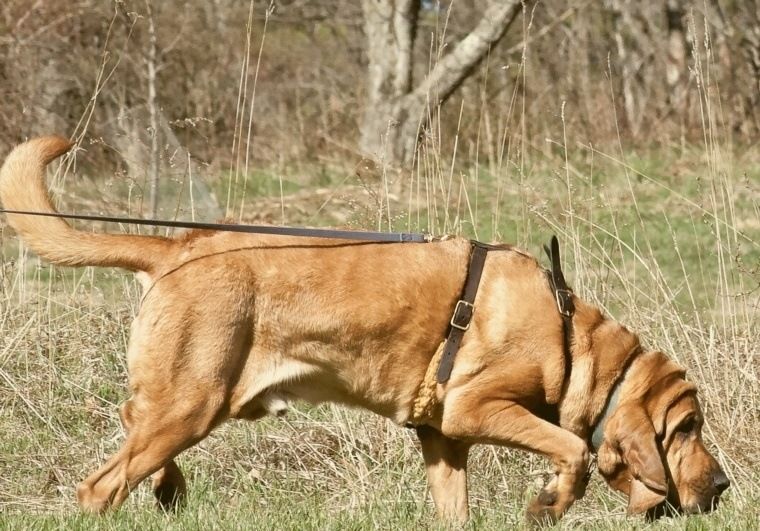
And bloodhounds are the best dogs for finding things. If you live in Florida you should contact my friend, and award winning bloodhound handler, Landa Coldiron. She has several specialized dogs for finding lost pets (including dogs) and she has helped over 180 people be reunited with their pet.
That’s It; Don’t Forget To Focus And Stay Positive

Getting upset and feeling bad will not help you get your dog back. This is a bit harsh, I know. But you are really better off with staying positive and doing everything you can. Many dogs get lost every day, and many are found. Look for what you can do, and do it!
I sincerely hope that you will find it as soon as possible!
Is It Your Fault That Your Dog Ran Away?
You might be feeling guilty or wondering if you are to blame. Did your dog no longer like you? Should you have kept him/her on the leash? Should you have avoided that area where you know there is a lot of game?
Please don’t blame yourself!
There are so many reasons why your dog ran away. And you can never know exactly what is going to happen. Your dog doesn’t hate you, or want to live somewhere else. He/she will be just as happy as you to get reunited.
How To Prevent it From Happening in the First Place
Let’s make sure that you never have to go through this again with some prevention measurements. Many pet owners know the importance of collars and tags. One reason is the presence of collars and dog tags will let anyone who sees the dog know he is not a stray. A second reason is they can contain identifying information so a rescuer will know who to call and how to contact you.
Tags and collars are not enough to keep him safe. These products do not provide protection from traffic accidents and other accidents, or from individuals who steal dogs. Fortunately, there is another product you can purchase that will significantly increase his safety, and help you find him before a tragedy occurs: A GPS dog tracker, or GPS tracking collar.
Read our article on best GPS trackers for dogs to find out how these work, and which are our best recommendations
